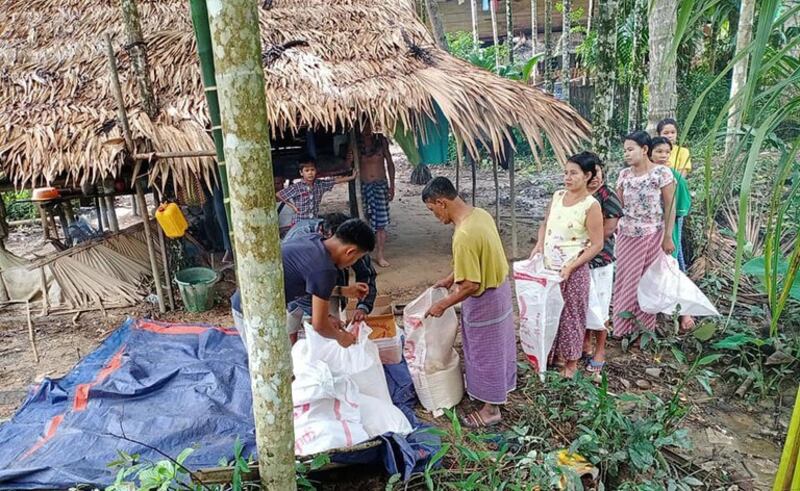Myanmar’s military is shifting its strategy in the country’s southern Tanintharyi region, where it is battling dozens of ethnic armies and armed resistance groups, to lean on local fighters and isolate its opposition, according to residents and local defense forces.
Sandwiched between Thailand to the east and the Andaman Sea to the west, the narrow Tanintharyi region is the seat of the junta’s Coastal Region Command.
But the country’s southernmost region is also home to the ethnic Karen National Liberation Army, the Kaw Thoo Lei Army and its ethnic Kayin troops, and various anti-junta People’s Defense Force paramilitary groups.
As many as 60 ethnic armies, armed resistance and pro-junta militia groups are currently operating in the region, according to a report published in September by FE5 Tanintharyi, a group formed by local news media and researchers.
With significantly fewer resources, anti-junta groups were forced to adopt guerrilla warfare tactics to stand a chance against the military after its February 2021 coup d’etat.
But an official of the Tanintharyi Region People’s Defense Force, or PDF, who goes by the name “Star” told RFA Burmese that the tactics have been increasingly effective against the military and led to “many casualties on their side,” forcing the junta to rethink its approach.
“To change the situation, [the military is] adopting a counter-guerrilla system,” he said. “In particular, they began to use local troops ... [who] have better knowledge about the territory and access to information.”
Star said PDF groups in Tanintharyi have launched “many offensives” against junta troops this year and that there had been clashes in the region “almost everyday” in October.
In response, he said, the military has turned to using heavy artillery to avoid direct engagement – firing shells from the water and bases set up in the regional highlands.
The strategy has allowed the military to establish control of Tanintharyi’s urban areas, Star told RFA, but the region’s countryside “remains in the hands of the armed resistance.”
‘Four Cuts’ targets supplies, intel
A member of the Palaw Township Defense Force said that the junta is now implementing its “Four Cuts” strategy in the region in order to weaken its opponents’ supplies of food, funds, information and recruits in the townships of Tanintharyi, Palaw, Thayetchaung and Dawei.
“They established checkpoints, cut food supplies and, in some areas like Palaw where the resistance is strong … they impose restrictions on travel,” said the PDF member, who declined to be named, citing security concerns. “There are also limits on what you can transport – in some cases, you can’t even travel with a sack of rice.”

The restrictions have led to greater suffering for civilians who have fled fighting in the region, said a resident of Thayetchaung’s Yae Nge village, who spoke on condition of anonymity due to fear of reprisal.
“If we have food, we’ll eat and if not, we won’t eat,” said the resident, who is among an estimated 5,000 people from Yae Nge who were displaced by the conflict. “Similarly, if we have clothes, we’ll wear them. If not, we won’t wear them. Our most pressing concern is staying alive.”
Civilians targeted
Junta troops have also been inspecting, interrogating and arresting civilians along major roadways for their alleged ties to the armed resistance, residents said.
At least 3,203 civilians were arrested in Tanintharyi over the past 15 months, according to FE5 Tanintharyi, of whom 2,141 were released. The status of the remaining 1,062 is unknown, the group said.
Over the same period, 428 civilians were killed in Tanintharyi – 136 at the hands of junta troops or pro-junta militias, FE5 Tanintharyi said. At least 300 people were killed by resistance groups after being accused as informants for the military, by mines or artillery deployed by unknown organizations, or were victims of unsolved murders.
Attempts by RFA to contact Tanintharyi region junta spokesperson Thant Zin for comment on the military’s tactics in the region went unanswered Tuesday.
Some 82,200 people have been displaced by conflict in Tanintharyi region since the coup, the United Nations Office for the Coordination of Humanitarian Affairs said in an Oct. 2 statement, up 7,000 from the agency’s count a month earlier.
Translated by Htin Aung Kyaw. Edited by Joshua Lipes and Malcolm Foster.
